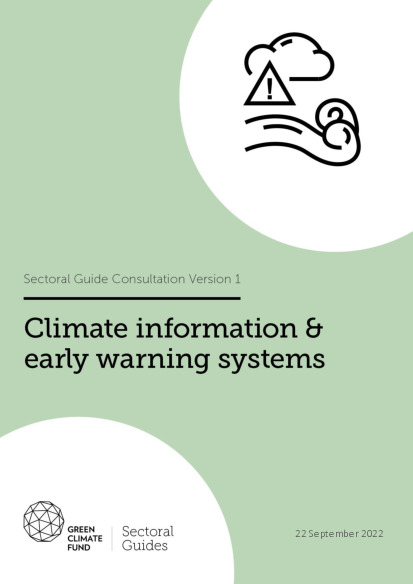Sectoral guide: Climate information & early warning systems
Between 1970 and 2019, 79% of disasters worldwide were caused by weather, water, and climate-related hazards. These disasters accounted for 56% of deaths and 75% of reported economic losses associated with natural hazard events. The situation is particularly acute in Small Island Developing States (SIDS) and Least Developed Countries (LDCs).
The intensity and frequency of climate-related disasters are projected to increase as climate change gathers pace, thus presenting a significant risk to achieving the UNFCCC and its Paris Agreement and Sustainable Development Goals. Transformation can be achieved by scaling up investment in fit-for-purpose Climate Information Services (ClS) and impact-based Multi-hazard Early Warning Systems (MHEWS) to support well-informed, science-based decision-making. Given the significant cost-benefit ratio and the potential for averting and minimising disaster risk, there is growing interest and demand for GCF to expand these services, particularly in developing countries most vulnerable to the impacts of extreme weather and climate, and to related compound events.
Paradigm shift can be achieved through adaptation and mitigation approaches that invest systematically in the value chain of CIS, MHEWS and early action capacity. Three distinct paradigm-shifting pathways can deliver significant and paradigm shifting impact: (1) strengthening climate information services, (2) promoting impact-based MHEWS and early action, and (3) improving Climate Information and Early Warning Systems (CIEWS) for investment and financial decisions. GCF is uniquely placed to unlock the barriers to the CIEWS market in developing countries by supporting governments to de-risk the environment and provide the incentives to crowd in private sector investments. Since a significant and growing component of CIEWS is Information and Communication Technologies (ICT) services, GCF leverages the ICT revolution – increasing efficiency and decreasing acquisition cost – to transform the CIEWS landscape in developing countries.
The sectoral guide draft was released for consultation between May 2022 and August 2022. The Secretariat received more than 290 suggestions and recommendations which are addressed in the current version of the guide. The sectoral guide will be submitted to the GCF Board for its consideration in 2022. In the meantime, GCF remains open to further feedback on this draft. For further inquiries please contact us via: [email protected].
